Best Pest Control in Ahmedabad: 10 Mistakes People Make While Choosing Pest Control Services
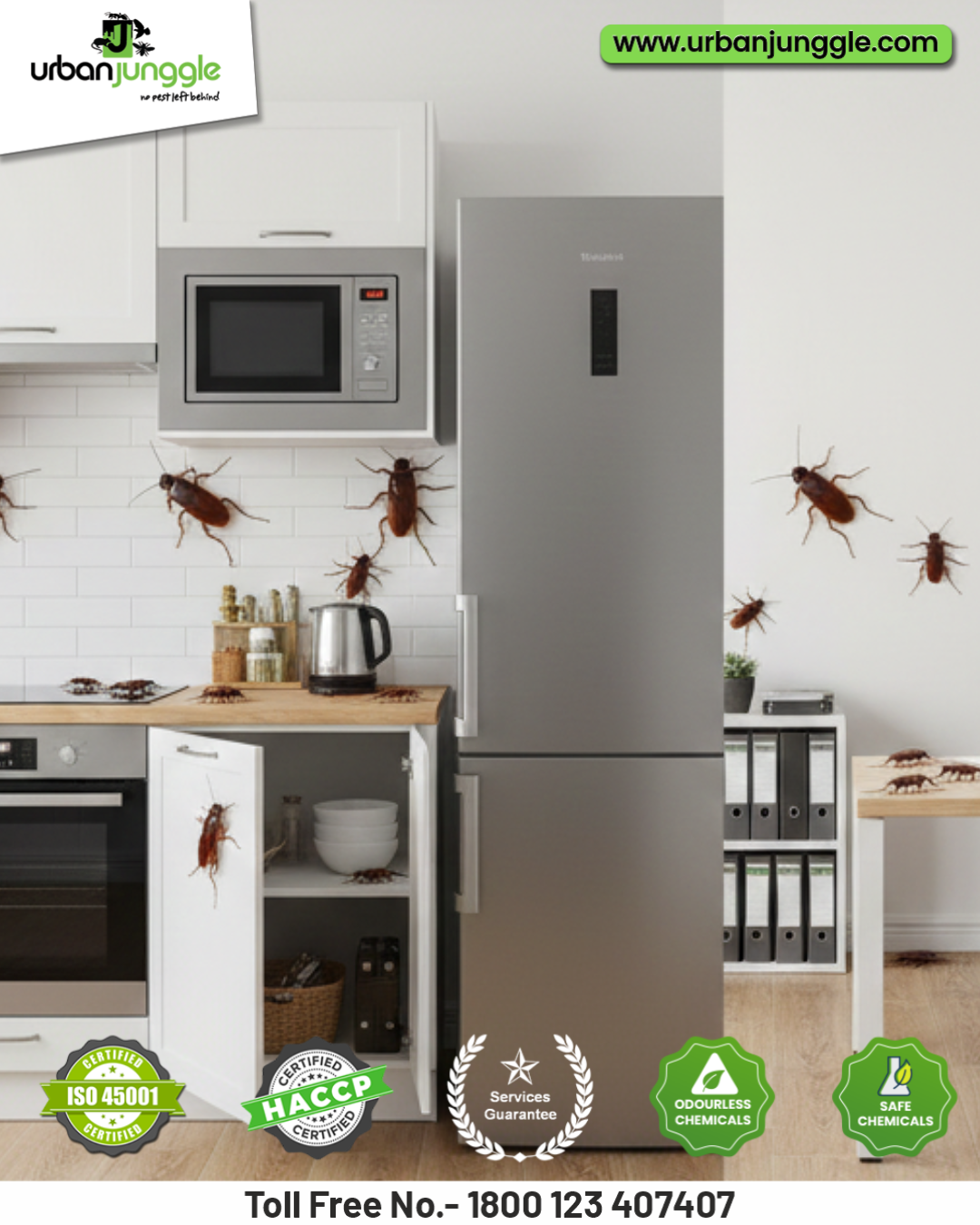
Introduction
Pest problems are common in homes and offices across Ahmedabad, from cockroaches in kitchens to termites damaging wooden furniture and rodents creating health risks. But while most people understand the importance of pest control, many choose the wrong service provider and suffer from ineffective results, wasted money, and repeated infestations.
Selecting the Best Pest Control In Ahmedabad is not just about picking the nearest or cheapest option. It requires research, safety checks, and understanding service quality.
In this detailed guide, we explain the 10 biggest mistakes people make while choosing pest control services and how you can avoid them.
1. Best Pest Control in Ahmedabad – Ignoring Company Experience
Experience matters a lot when choosing pest control. Many people hire services based solely on low price or fast availability, but this often leads to poor-quality work.
Experienced professionals:
- Understand Ahmedabad’s climate and pest patterns
- Know seasonal infestation trends
- Use advanced tools and techniques
- Provide long-lasting solutions
When you really want the Best Pest Control Ahmedabad, always choose a company with proven years of service and expertise.
2. Ignoring Certifications & Licenses
Pest control involves chemicals, equipment, and safety protocols. Hiring unlicensed providers is risky.
A certified company:
- Uses approved, safe chemicals
- Follows government regulations
- Provides professional-grade service
- Ensures health safety for kids and pets
Urban Junggle Pest Control, for example, follows all safety and certification requirements expected from the Best Pest Control Ahmedabad.
3. Not Asking About Pest-Specific Treatment
Not all pests require the same treatment. Many homeowners assume every pest control company handles every type of infestation.
Common pests in Ahmedabad include:
- Termites Pest Control
- Cockroaches Pest Control
- Bed Bugs Pest Control
- Ants Pest Control
- Rodent Pest Control
- Mosquito Pest Control
The Best Pest Control Ahmedabad always provides pest-specific solutions instead of a one-size-fits-all approach.
4. Choosing Only Based on Low Price
Cheap services often:
- Use low-quality chemicals
- Provide temporary results
- Skip safety measures
- Do not offer warranties
Instead of focusing on the lowest quote, compare service quality, number of visits, chemicals used, customer support, and guarantees.
Investing in quality now helps avoid repeated treatments later — something all customers expect from the Best Pest Control Ahmedabad.
5. Not Reading Customer Reviews
Reviews are one of the easiest ways to evaluate service quality.
Many people skip this step and end up hiring unreliable providers.
Look for reviews about:
- Punctuality
- Professional behavior
- Effectiveness of treatment
- Long-term results
- Customer satisfaction
- Post-service support
A company consistently praised by customers is often considered among the Best Pest Control Ahmedabad.
6. Not Checking the Type of Chemicals Used
Unsafe chemicals can cause:
- Breathing problems
- Allergies
- Skin irritation
- Pet health issues
Always ask the company whether they use:
- Odorless chemicals
- Eco-friendly products
- Child-safe solutions
- WHO-approved treatments
The Best Pest Control Ahmedabad always prioritizes safe and environment-friendly chemicals, especially in homes with kids, elderly people, or pets.
7. Ignoring Safety Measures & Procedures
Pest control is not just about spraying chemicals everywhere.
Professionals follow proper safety guidelines like:
- Covering food & utensils
- Wearing protective gear
- Ensuring proper ventilation
- Giving safety advice post-treatment
Ignoring safety can cause health risks.
Urban Junggle Pest Control ensures complete safety protocols, as expected from the Best Pest Control Ahmedabad.
8. Not Asking About Warranty or Guarantee
A reliable pest control company should offer:
- Service warranties
- Free follow-up visits
- Assured long-lasting results
Many customers regret choosing companies that don’t provide guarantees because pests return within weeks.
The Best Pest Control Ahmedabad always offers written warranties for services like termite control, bed bug removal, and cockroach treatments.
9. Not Checking Tools & Technology
Modern pest control requires modern solutions.
Outdated equipment means ineffective results.
Advanced technology includes:
- Gel-based treatments
- Herbal pest control
- Odorless sprays
- Heat treatment for bed bugs
- Termite baiting systems
The Best Pest Control Ahmedabad stays updated with modern techniques that offer faster, safer, and more permanent results.
10. Not Choosing Local Expertise
Ahmedabad has unique pest challenges due to its climate, food habits, and construction styles.
Local experts understand:
- Which areas face termite risk
- Seasonal spikes in mosquito breeding
- Monsoon-related infestations
- Common pests in apartments vs. bungalows
Companies with local knowledge deliver better results.
Urban Junggle Pest Control is known for its deep understanding of local pest issues, making it one of the Best Pest Control Ahmedabad.
How to Avoid These Mistakes (Quick Checklist)
Before hiring a pest control service in Ahmedabad, ask:
- Is the company certified and experienced?
- Do they offer pest-specific treatment?
- What chemicals do they use?
- Do they provide warranties or follow-up visits?
- Are the prices reasonable and transparent?
- Do they have strong Google reviews?
- Are the methods safe for kids and pets?
If a company checks all these boxes, you are likely hiring the best pest control in Ahmedabad for your home or office.
Why Urban Junggle Pest Control Is the Best Pest Control Ahmedabad
Urban Junggle Pest Control provides:
- Professional & trained technicians
- Child-safe & pet-safe chemical treatments
- Customized solutions for each pest
- Eco-friendly and odorless methods
- Affordable packages with a warranty
- Fast and reliable service
- Local expertise in Ahmedabad’s pest challenges
Our focus on quality, safety, and customer satisfaction makes us a top choice for anyone searching for the Best Pest Control Ahmedabad.
FAQs
1. How often should I get pest control done in Ahmedabad?
For most homes, once every 4–6 months is ideal. For termites or severe infestations, a more frequent schedule may be recommended.
2. Are the chemicals safe for kids and pets?
Yes, when you choose a professional company like Urban Junggle Pest Control. We use eco-friendly and WHO-approved chemicals.
3. How long does it take for the treatment to work?
Some pests show immediate reduction, while others (like termites or bed bugs) take 7–15 days for full results.
4. Do pests come back after treatment?
Not if you follow post-treatment instructions and choose the Best Pest Control Ahmedabad that offers guaranteed follow-ups.
Conclusion
Choosing the right pest control service is important for your family’s safety, your home’s hygiene, and long-term protection. Avoiding the common mistakes listed above ensures you get the best results.
If you’re looking for safe, reliable, and effective solutions, Urban Junggle Pest Control proudly delivers services trusted as the best pest control in Ahmedabad.
Monsoon Invaders: How to Keep Cockroaches and Rodents Out of Your Home This Rainy Season
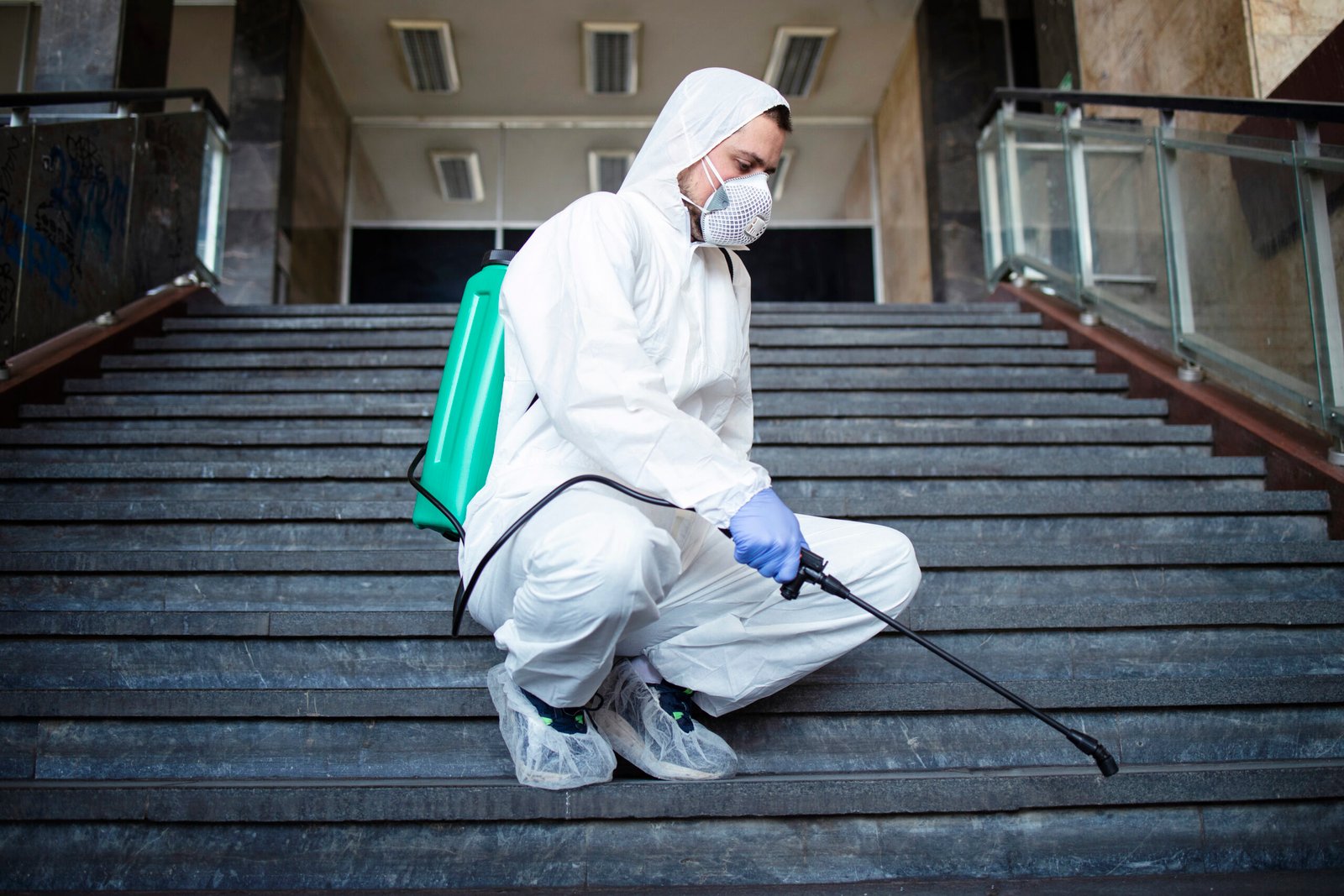
The monsoon season brings relief from scorching heat, but it also ushers in unwelcome guests – cockroaches and rodents. As India experiences its annual rainfall, homeowners across the country face increased pest invasions that can turn their peaceful homes into battlegrounds. If you’re searching for pest control solutions in India, you’ve come to the right place.
Why Monsoons Trigger Pest Invasions
During monsoon season, pests actively seek shelter from heavy rains and flooding. Your warm, dry home becomes an attractive refuge for these unwanted invaders. Cockroaches and rodents multiply rapidly in humid conditions, making this the peak season for infestations across urban and rural areas throughout India.
The combination of moisture, food scraps, and hidden spaces creates ideal breeding conditions. Within weeks, a small pest problem can escalate into a full-blown infestation requiring professional intervention from experienced pest control services all over India.
Common Monsoon Pest Invaders
Cockroaches: The Resilient Survivors
Cockroaches thrive in monsoon conditions due to their preference for warm, moist environments. These persistent pests can:
- Contaminate food and surfaces with harmful bacteria
- Trigger allergies and asthma attacks
- Reproduce rapidly, with females producing up to 400 offspring annually
- Hide in kitchen cabinets, bathrooms, and drainage areas
German and American cockroaches are particularly common during rainy seasons, making cockroach control services essential for maintaining hygiene standards.
Rodents: The Destructive Invaders
Rats and mice seek indoor shelter when their outdoor habitats flood. These destructive pests cause significant problems:
- Gnaw through electrical wires, creating fire hazards
- Contaminate stored food with droppings and urine
- Carry dangerous diseases like leptospirosis and hantavirus
- Damage property by chewing through furniture and walls
Professional rodent control services become crucial during monsoon months, when rodent populations surge dramatically.
Monsoon-Proof Your Home: Essential Prevention Tips
Seal Entry Points
Inspect your home thoroughly for cracks, gaps, and openings. Pay special attention to:
- Window frames and door seals
- Pipe entry points and electrical conduits
- Foundation cracks and wall joints
- Ventilation gaps and chimney openings
Use weatherproof sealants and steel wool to block potential entry routes. This simple step significantly reduces pest invasion chances.
Eliminate Moisture Sources
Since pests are attracted to moisture, controlling humidity levels is critical:
- Fix leaky pipes, faucets, and drainage issues immediately
- Use exhaust fans in bathrooms and kitchens
- Ensure proper ventilation throughout your home
- Remove standing water from plant saucers and containers
Maintain Cleanliness Standards
Consistent cleanliness disrupts pest breeding cycles:
- Store food in airtight containers
- Clean kitchen surfaces and appliances regularly
- Vacuum frequently, especially in hidden corners
- Dispose of garbage in sealed bins with tight-fitting lids
Trim Vegetation and Clear Debris
Overgrown vegetation provides pest highways to your home:
- Trim tree branches touching your roof or walls
- Remove fallen leaves and organic debris
- Maintain a proper distance between plants and building foundations
- Clear gutters regularly to prevent water accumulation
When DIY Methods Fall Short
While prevention methods help reduce pest activity, established infestations require professional expertise. Best pest control services India utilize advanced techniques and safe, effective treatments that DIY methods simply cannot match.
Signs you need professional help include:
- Persistent pest sightings despite prevention efforts
- Multiple dead pests are found regularly
- Unusual odors or sounds from walls and hidden areas
- Visible damage to property or stored items
Why Choose Professional Pest Control Services
Advanced Treatment Methods
Professional pest control companies employ sophisticated techniques unavailable to homeowners:
- Targeted baiting systems for specific pest species
- Residual treatments providing long-term protection
- Integrated pest management (IPM) approaches
- Safe, eco-friendly pesticides protecting family health
Comprehensive Inspection and Assessment
Expert technicians conduct thorough property assessments, identifying:
- Current infestation levels and pest species
- Potential entry points and vulnerability areas
- Moisture sources and conducive conditions
- Customized treatment plans for your specific situation
Long-term Protection Strategies
Quality pest control services India focus on sustainable solutions rather than quick fixes. Professional treatments include:
- Follow-up visits, ensuring treatment effectiveness
- Preventive maintenance programs
- Educational guidance for ongoing pest prevention
- Warranty coverage for peace of mind
Urban Junggle: Your Trusted Pest Control Partner
When monsoon pests threaten your home’s comfort and safety, Urban Junggle delivers reliable, effective solutions. As a leading pest control company operating all over India, we understand the unique challenges homeowners face during rainy seasons.
Our comprehensive approach includes:
- Expert cockroach control: Targeted treatments eliminating existing populations and preventing future infestations
- Professional rodent management: Safe, humane removal methods protecting your property and health
- Preventive solutions: Long-term strategies keeping pests away year-round
- Emergency response: Rapid intervention for urgent pest situations
Why Choose Urban Junggle?
With extensive experience providing the best pest control services across India, Urban Junggle stands out through:
- Trained, certified technicians using the latest pest control technologies
- Safe, family-friendly treatment methods
- Comprehensive service coverage throughout urban and suburban areas
- Affordable pricing with transparent, upfront estimates
- Customer satisfaction guarantee backing every service
Take Action Before Pests Take Over
Don’t wait for small pest problems to become major infestations. Monsoon season demands proactive pest management strategies, combining prevention methods with professional expertise.
Contact Urban Junggle today for your free pest inspection. Our experienced team will assess your property, identify vulnerabilities, and recommend a treatment plan tailored to your specific needs.
Call us at 1800 123 407407 for immediate assistance or visit our website to book your appointment. With Urban Junggle proven pest control solutions available all over India, you can enjoy the monsoon season without worrying about unwelcome invaders.
Remember: effective pest control isn’t just about elimination – it’s about creating a comprehensive defense system protecting your home, health, and peace of mind throughout the rainy season and beyond.
Why Urban Junggle Stands Out Among the Best Pest Control in India

When it comes to safeguarding your home or business from unwanted pests, choosing a reliable partner is essential. As one of the best pest control companies in India, Urban Junggle has become the go-to name for thousands of satisfied customers across the country.
What makes us stand out? It’s our innovative solutions, expert technicians, customer-first attitude, and commitment to safe, eco-friendly treatments.
Our Unique Approach
At Urban Junggle, we do more than just spray chemicals. Our approach begins with a comprehensive inspection to identify the pest problem accurately and offer customized treatment plans. Whether you’re dealing with termites, rodents, cockroaches, ants, wood borers, or even pigeons and other birds, we use a scientific and targeted method that ensures long-term relief.
- Advanced Tools: We use cutting-edge equipment and detection tools.
- Certified Technicians: Our team undergoes rigorous training and certification.
- Customized Plans: Every pest problem is unique, so is our approach.
Our termite control services are among the most effective in the industry. Explore now.
Affordable and Transparent Pricing
We believe that top-quality pest control should be accessible. That’s why we offer:
- Free inspections and quotes
- Competitive pricing packages
- No hidden charges
- Annual Maintenance Contracts (AMCs) for year-round protection
With Urban Junggle, you always know what you’re paying for and why.
Need help with rats or mice? Our Rodent Control Solutions are fast, humane, and highly effective.
Being among the best pest control services in India means taking responsibility for health and the environment. We use low-toxicity, government-approved chemicals that are:
- Safe for kids, pets, and elderly family members
- Non-disruptive to your routine
- Compliant with CPCB and BIS standards
We follow Integrated Pest Management (IPM) principles prioritizing prevention and minimal chemical use.
Want to know more about pest regulations? Visit the official Central Pollution Control Board (CPCB) to explore guidelines.
Our Service Areas
Urban Junggle is headquartered in Ahmedabad and expanding rapidly across major Indian cities. We proudly serve:
- Ahmedabad
- Gandhinagar
- Mumbai
- Pune
- Bangalore
- Surat
- Rajkot
Our pan-India network ensures consistent service quality, regardless of location. Read about our Mosquito Control Services available in your city.
FAQs About Urban Junggle Pest Control Services
Q1: How does Urban Junggle differ from other pest control providers in India?
Urban Junggle stands out due to its certified technicians, advanced inspection tools, safe chemicals, transparent pricing, and strong customer support.
Q2: What guarantees does Urban Junggle offer?
We provide a satisfaction guarantee with every service. For many services, we also include free follow-ups within a defined period.
Q3: Is follow-up included with every service?
Yes, depending on the package, we provide follow-ups to ensure that pests are gone for good.
Q4: Are Urban Junggle pest control treatments safe for children and pets?
Absolutely. Our eco-friendly solutions are designed to be safe for families, pets, and the environment.
Q5: Do you offer AMC (Annual Maintenance Contracts)?
Yes, our AMC packages are designed for long-term protection and cost savings. Ideal for homes, offices, and commercial properties.
Choose Urban Junggle?
- Top-Rated Pest Control Service
- Scientific Approach with Guaranteed Results
- Eco-Friendly and Pet-Safe Solutions
- Quick Response and Hassle-Free Scheduling
- Widespread Service Network Across India
Final Call to Action
Looking for the best pest control in India? You’ve found it. Urban Junggle delivers proven results with a personal touch. Whether it’s a sudden termite attack or a year-round rodent menace, we’re here to help safely, swiftly, and effectively.
Best Pest Control Company in India: Why ISO 45001& HACCP Matter
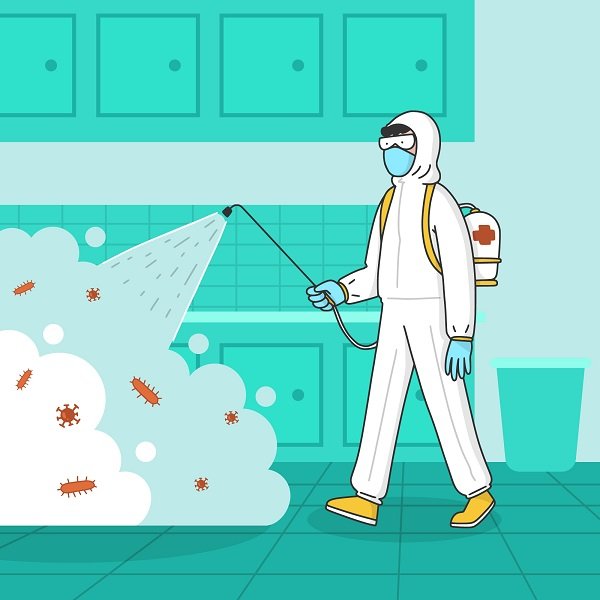
Certified Pest Control That Protects Your Business in Ahmedabad & Across India
In highly regulated industries like food, pharma, hospitality, and retail, pest control isn’t just about eliminating insects; it’s about meeting the highest global safety and hygiene standards. One pest-related incident can mean product recalls, failed audits, or shutdowns.
That’s why businesses across India trust Urban Junggle, the best pest control company in India certified with both ISO 45001 and HACCP a rare distinction in the industry.
What Is ISO 45001? Occupational Safety in Pest Management
ISO 45001 is an internationally recognized standard for Occupational Health & Safety (OHS). At Urban Junggle, it means every pest control treatment follows strict protocols to protect both technicians and your team.
Key Benefits:
- Safe chemical handling, storage, and disposal
- Risk assessments for sensitive environments
- Staff training in safety & PPE use
- Compliant with health and labor regulations
For businesses in Ahmedabad, Gujarat, and across India, ISO 45001 ensures your pest control provider operates safely in your facility, especially in high-risk zones like hospitals, factories, and labs.
What Is HACCP? Food-Safe Pest Control India Can Rely On
HACCP (Hazard Analysis and Critical Control Points) is the global gold standard in food safety. Urban Junggle HACCP certification guarantees that pest control is done without any risk of contamination or regulatory breach.
What You Get:
- Risk assessments before every service
- Tailored pest treatment plans for food & pharma
- No risk of chemical or pest contamination
- Preventive strategies to stop future infestations
For companies in FMCG, pharma, and food exports, HACCP pest control is essential for compliance with FSSAI, FDA, and global regulations.
Why Certified Pest Control Is a Game-Changer for Industries
Hotels & Resorts
- Boost guest trust with visible hygiene standards
- Avoid pest-related complaints or shutdowns
- Protect brand reputation with certified practices
Food & Beverage Manufacturing
- Achieve full FSSAI, FDA, and HACCP compliance
- Prevent contamination and safeguard food safety
- Support smooth audits and international exports
Pharmaceuticals
- Meet GMP, WHO, and CDSCO standards
- Maintain sterile, pest-free environments
- Ensure audit-readiness with full documentation
Retail & Shopping Malls
- Keep high-footfall areas pest-free
- Prevent inventory loss and negative reviews
- Protect customers and employees alike
Why Urban Junggle Is the Best Pest Control Company in India
Urban Junggle is not just a pest control service we’re a compliance-driven partner. Based in Ahmedabad, we serve Gujarat and pan-India businesses with certified, science-backed pest solutions.
What Sets Us Apart:
- India’s only pest control company with ISO 45001 & HACCP certifications
- Eco-friendly, chemical-safe treatments
- 6-hour guaranteed response time
- Tailored service plans for food, pharma, retail, hospitality
- Strong client base across Ahmedabad, Gujarat & India
Get Audit-Ready, Certified Pest Control in Ahmedabad & India
From commercial kitchens to sterile pharma units, businesses across India trust Urban Junggle to deliver pest control that meets global compliance standards.
With Us, You Get:
- Dual certifications (ISO 45001 & HACCP)
- Full documentation & reports for auditors
- Fast service & on-call support
- Safe, effective & environment-conscious methods
Service Areas:
Ahmedabad | Surat | Vadodara | Rajkot | Gandhinagar | Mumbai |
Comprehensive Pest Control Services for a Safer Home | Urban Junggle
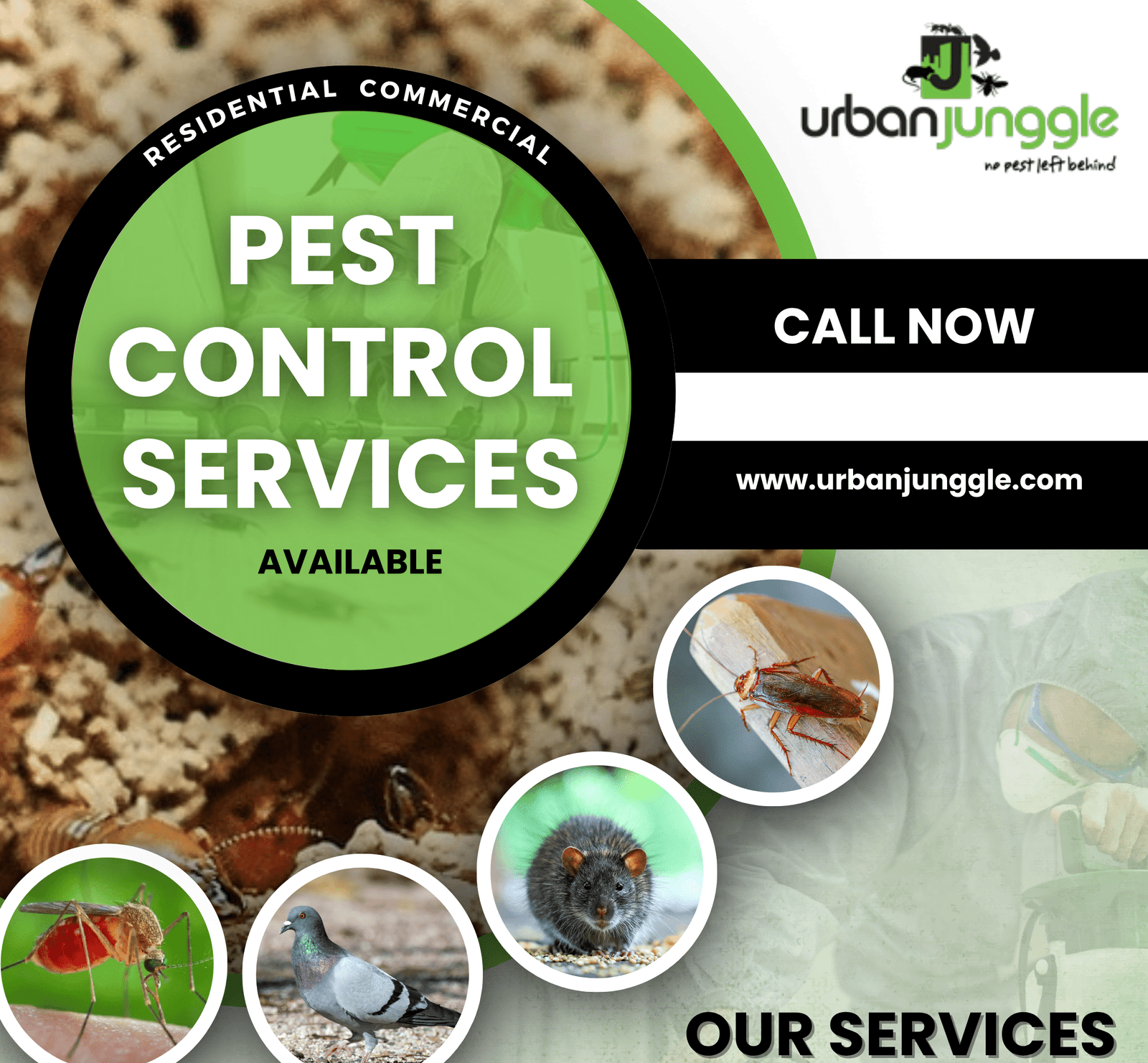
Urban Junggle: Your Trusted Pest Control Experts
Pests can disrupt your comfort, safety, and health. Whether it’s cockroaches in the kitchen, termites in the walls, or rodents in the attic, Urban Junggle offers reliable and effective solutions to eliminate infestations and keep them from coming back. Our team uses industry-best practices to ensure your home or business remains pest-free.
Why Professional Pest Control Matters
DIY methods may offer temporary relief, but professional pest control ensures long-term protection. Here’s why it’s essential:
- Prevents structural damage (especially from termites and rodents)
- Reduces exposure to allergens and diseases
- Protects food storage and hygiene
- Saves money on long-term repairs
Explore our full range of services
For more on safe pest practices, refer to the EPA’s guide on pest control.
Common Household Pests We Eliminate
· Cockroach Control
Cockroaches can carry bacteria like E. coli and salmonella. We provide gel baiting, chemical treatment, and preventive solutions.
· Termite Treatment
Silent destroyers like termites damage wood, flooring, and even furniture. Urban Junggle uses liquid termiticides and bait systems to eliminate them.
· Rodent Management
Rodents chew through wires and spread diseases. Our rodent control program includes trapping, sealing, and monitoring.
· Ants, Spiders & Other Insects
Whether it’s tiny sugar ants or venomous spiders, we tailor our insecticide treatments based on the infestation severity.
See detailed services here
Our Eco-Friendly Pest Control Approach
Urban Junggle is committed to protecting both your health and the environment. That’s why we offer:
- Green-certified products approved by the EPA
- Odorless treatments safe for children and pets
- Integrated Pest Management (IPM) for sustainable pest reduction
Our process starts with a full inspection and ends with preventative recommendations to ensure pests stay out.
Residential and Commercial Pest Control
· Home Pest Control
From apartments to villas, we offer:
- Single-time treatment
- AMC (Annual Maintenance Contracts)
- Emergency pest removal
· Commercial Pest Control
Protect your workplace, warehouse, or retail shop from pest threats. We provide industry-compliant documentation and discreet service.
We serve businesses in:
- Hospitality
- Healthcare
- Food Processing
- Warehousing
Contact us for custom commercial plans
How Our Service Works
- Initial Inspection – We identify infestation type, entry points, and damage
- Customized Treatment – Safe chemical and non-chemical options available
- Monitoring & Follow-Up – Optional check-ups to ensure lasting results
All our services come with post-treatment support and expert tips to prevent recurrence.
FAQs: Pest Control Services at Urban Junggle
Q1. Are your pest control treatments safe for children and pets?
Yes, we use eco-friendly and odorless products that are safe once dry.
Q2. How often should I schedule pest control services?
We recommend quarterly visits for most homes. Check our AMC plans for ongoing protection.
Q3. What types of pests do you handle?
Urban Junggle handles cockroaches, termites, mosquitoes, rodents, ants, spiders, and more.
Q4. Is there any prep I need to do before the treatment?
Our team will give you a checklist before treatment, including clearing food items and covering water containers.
Q5. How quickly will I see results?
Results are often visible within 24–48 hours, depending on pest severity and treatment type.
Say Goodbye to Mosquitoes: Effective Pest Control with Urban Junggle
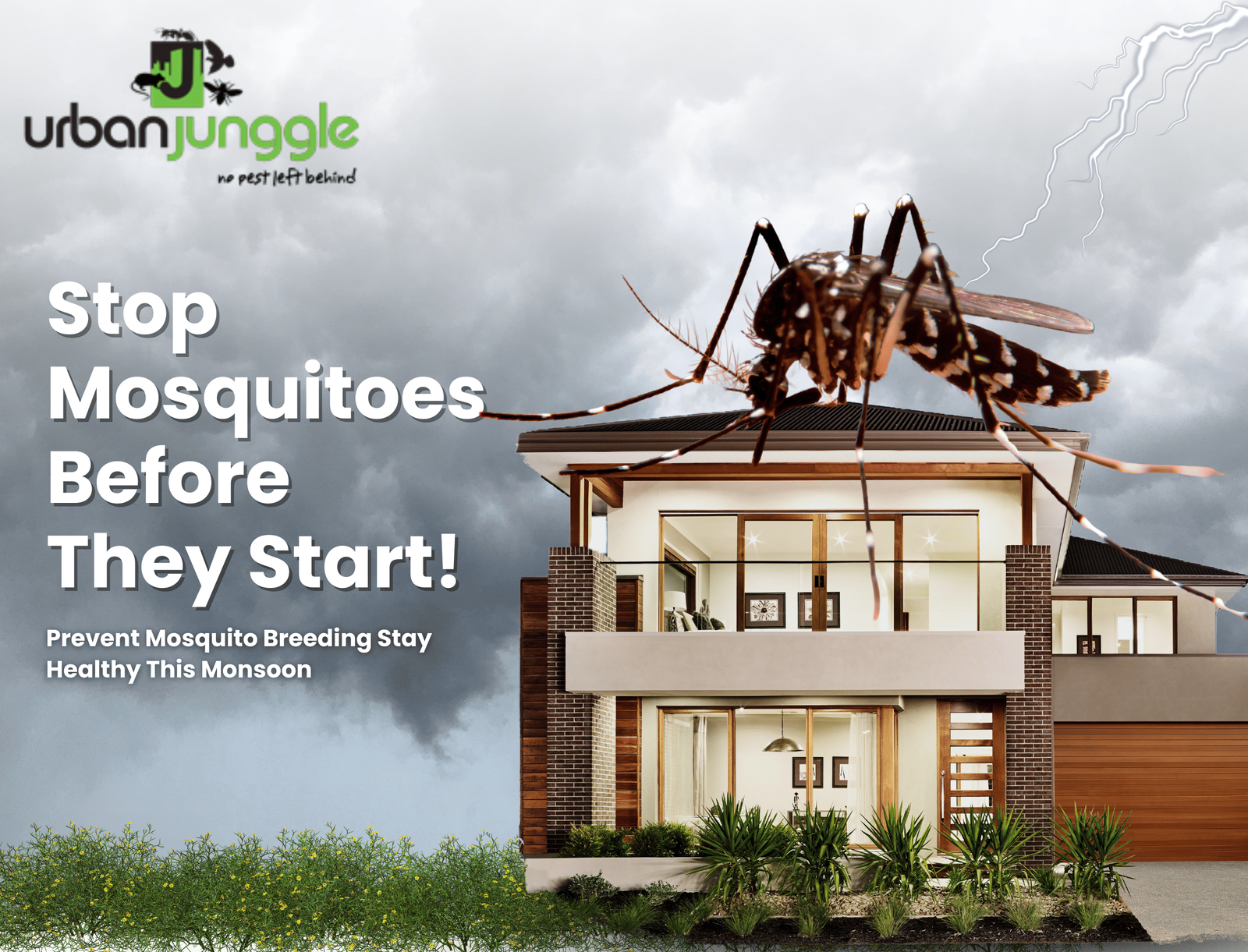
Mosquitoes are more than just annoying—they’re a threat to health and comfort. Urban Junggle understands the importance of a mosquito-free environment. Whether you’re dealing with a backyard infestation or want to protect your family from mosquito-borne diseases, our expert solutions offer lasting relief.
Why Mosquito Control Matters
Mosquitoes are vectors for harmful diseases like:
- Dengue Fever
- Malaria
- Zika Virus
- West Nile Virus
They breed quickly in stagnant water and thrive in warm, humid conditions. If left unchecked, a small infestation can become a major problem.
In many regions, mosquitoes are active for the majority of the year. This makes it vital to take year-round measures to control them effectively. Mosquito bites aren’t just itchy—they can lead to serious health issues, especially for children, elderly individuals, and pets.
Signs You Need Mosquito Pest Control
- Regular mosquito bites around dusk or dawn
- Buzzing near ears at night
- Visible larvae in standing water
- Unexplained skin irritations
- Sightings of mosquitoes inside your home during the day
If any of these sound familiar, it’s time to take action with Urban Junggle’s mosquito pest control services.
DIY Prevention Tips from Urban Junggle
1. Eliminate Standing Water
- Empty buckets, flower pots, and birdbaths weekly
- Clear gutters and drains
- Store outdoor containers upside-down
- Treat swimming pools and ornamental ponds with larvicides
2. Use Natural Repellents
- Plant mosquito-repelling plants like citronella, lemongrass, and lavender
- Apply essential oils like eucalyptus, peppermint, and tea tree oil around entryways
- Burn citronella candles during evening hours outdoors
3. Install Physical Barriers
- Repair window and door screens
- Use mosquito nets for beds and patios
- Install door sweeps and weather stripping
These steps may reduce mosquito populations, but they may not fully eliminate infestations. That’s where professional pest control from Urban Junggle makes the difference.
Professional Mosquito Management Services
Urban Junggle offers comprehensive mosquito control services tailored to your space:
Site Assessment
Our experts visit your property to inspect for breeding areas such as flower pots, unused tires, drains, and more. We create a site map and mosquito activity report.
Eco-Friendly Treatment
We use EPA-approved, family-safe solutions that target both larvae and adult mosquitoes. Treatments include eco-conscious fogging, misting, and larvicidal applications.
Residual Barrier Spray
Our technicians apply a protective barrier around your home, including vegetation, shaded corners, and eaves, to deter mosquitoes for weeks.
Seasonal Plans
We offer recurring treatment plans during peak mosquito seasons for year-round protection. Monthly, bi-monthly, or quarterly options are available based on your need.
Explore our full service options here
Indoor Mosquito Control Solutions
Did you know mosquitoes can thrive indoors too?
Urban Junggle provides indoor control measures such as:
- Safe interior fogging for severe infestations
- Indoor-safe traps that lure and eliminate mosquitoes
- Advice on sealing entry points to prevent future invasions
We ensure that treatments are odorless, non-staining, and safe for use in kitchens, bedrooms, and children’s play areas.
Why Choose Urban Junggle?
- Expertise: Our technicians are trained in eco-conscious mosquito control methods.
- Safe Treatments: All solutions are safe for children and pets once dry.
- Guaranteed Results: We stand behind our service with satisfaction guarantees.
- Custom Plans: Every home is different. We build a strategy that fits your needs.
- Trusted Service: Backed by hundreds of satisfied clients across India.
Mosquito Breeding Hotspots to Watch
- Flowerpots and drip trays
- Water storage tanks
- AC drip trays
- Unused containers
- Overwatered garden areas
- Septic tank vents
Urban Junggle technicians are trained to identify and treat all high-risk zones to ensure thorough mosquito control.
Schedule Your Service Today
Don’t wait until mosquitoes take over your space. Urban Junggle is here to help with fast, friendly, and effective mosquito pest control services.
Book Now: https://urbanjunggle.com/mosquito-management-services/
Or call us at 1-800-URBAN-JUNGGLE to speak with a pest control specialist.
Final Thoughts
Effective mosquito pest control is a multi-layered approach that includes prevention, professional treatment, and ongoing monitoring. Urban Junggle offers everything you need to keep your home safe, healthy, and mosquito-free. Our commitment to eco-friendly solutions ensures protection for your family and the environment.
Don’t let mosquitoes ruin your comfort—get in touch with Urban Junggle today and reclaim your space.
When to Call Rodent Control Services in Ahmedabad: 7 Warning Signs

Ignoring a rat problem in Ahmedabad can lead to costly repairs and health hazards. From gnawed wires to nocturnal noises, we’ll break down the key signs you need rodent control in Ahmedabad and how Gujarat’s top exterminators resolve infestations fast.
Top 7 Signs You Need Professional Rodent Control
1. Scratching Noises in Walls or Ceilings
- Ahmedabad Hotspots: Older buildings in Khadia or Kalupur with wooden ceilings.
- What It Means: Rats nesting in insulation or attics.
Action: Hire 24/7 rat exterminators in Gujarat for immediate inspection.
2. Gnawed Wires or Furniture
- Risk: Chewed electrical wiring causes fires in SG Highway apartments.
- Repair Cost: ₹15,000–₹50,000 for rewiring a 3BHK.
3. Foul Odors from Hidden Nests
- Cause: Dead rats or urine-soaked nesting materials.
- Common in: Cluttered storerooms in Prahladnagar villas.
4. Rat Droppings in Kitchens or Godowns
- Identification:
- Roof Rats: Small, spindle-shaped.
- Bandicoots: Large, capsule-shaped.
Health Risk: Droppings spread salmonella and hantavirus.
5. Pet Anxiety or Unexplained Injuries
- Ahmedabad Cases: Dogs/cats in Thaltej gardens bitten by rats.
- Solution: Emergency rat removal services to protect pets
6. Nests in Lofts or Garages
- Materials Used: Shredded paper, fabric, or cardboard.
- Monsoon Alert: Damp lofts in Nikol attract nesting.
7. Visible Rat Sightings During the Day
- Severity Indicator: Rats foraging in daylight signal large infestations.
Why DIY Methods Fail in Gujarat’s Climate
- Poison Risks: Dead rats rot in walls, causing unbearable smells.
- Trap Limitations: Roof rats evade glue traps in Ahmedabad high-rises.
- Monsoon Challenges: Rains wash away natural repellents like pepper spray.
Benefits of Hiring Professional Rat Control in Ahmedabad
1. Advanced Techniques
- Heat Mapping: Locate nests in warehouses near Vatva.
- Rodent-Proofing: Seal entry points with steel mesh and cement.
2. Cost-Effective Long-Term Solutions
- Prevention Plans: Save ₹50,000+ in annual repair costs.
- Warranties: Top services like Urban Jungle offer 6-month guarantees.
3. Safety
- Pet-Friendly Chemicals: Safe for homes with cats/dogs.
- Disinfection: Clean droppings and sanitize areas like kitchens in Maninagar.
How to Choose the Best Pest Control for Rats in Ahmedabad
- 24/7 Availability: Monsoon emergencies require immediate response.
- Local Expertise: Knowledge of Gujarat’s rat species (e.g., Bandicoots).
- Transparent Pricing: Avoid hidden charges—compare quotes.
🔗 Explore affordable rodent control in Gujarat with free inspections.
When to Opt for Emergency Rat Removal
Call for urgent help if:
- Rats swarm during festivals (e.g., Navratri storage setups).
- Infestations in restaurants (e.g., Law Garden eateries risk shutdowns).
- Bites or allergic reactions in family members.
FAQs: Rodent Control in Gujarat
Q: How much does rat extermination cost in Ahmedabad?
A: ₹3,000–₹15,000 depending on infestation size and property type.
Q: Are Gujarat’s rodent control chemicals safe for kids?
A: Reputable services use eco-friendly, non-toxic treatments.
Conclusion
From scratching noises to daytime rat sightings, don’t ignore the signs. Protect your Ahmedabad property with prompt action—contact Urban Jungle for reliable, affordable rodent control.
⚠️ Act Now: Spotting rats? Call our 24/7 team to prevent damage and disease!
Top 5 Winter Pests to Watch Out for and How to Deal with Them

Winter has its own unique charm with snowflakes falling and the promise of cozy evenings by the fireplace. However, along with the joys of the season, winter also brings some unwelcome guests into our homes—winter pests. These pests seek shelter and sustenance indoors when the temperatures drop, making them a common nuisance during the colder months. In this blog post, we’ll highlight the top five winter pests to watch out for and provide tips on how to identify and deal with them.

- Rodents – Mice and rats are among the most notorious winter pests. They enter homes through small cracks and gaps in search of warmth and food. Signs of a rodent infestation include droppings, chewed wires, and gnawed food packaging. To prevent these pests, seal entry points, keep food stored in airtight containers, and consider setting traps or hiring a pest control professional.
- Spiders – While many spider species remain active during the winter, some seek shelter indoors. Common household spiders like the house spider and wolf spider may be found in corners, basements, and attics. Regular cleaning and sealing cracks can help deter spiders from entering your home.
- Cockroaches – Cockroaches are resilient pests that can survive in colder temperatures. They often hide in warm, damp areas like kitchens and bathrooms. Keep these areas clean, fix any water leaks, and store food securely to reduce the risk of a roach infestation.
- Bed Bugs
Bed bugs are year-round pests, but they can become more noticeable during winter as we spend more time indoors. These tiny pests feed on blood and can cause itchy bites and sleepless nights. - Termites
Most people associate termites with warm weather because that is generally when you will see their swarm. However, they take advantage of these cooler months to reproduce – which they will continue to do right through February. Termites are of greatest concern, as their colonies can grow to several million in size. They are also very aggressive insects that cause more property damage each year.
Get Rid of Pests with Urban Junggle’s Winter Pest Control Service
With Urban Junggle’s pest control in winter, you can effectively eliminate these unwelcome intruders. Their expert team uses advanced techniques and eco-friendly solutions to ensure your home remains safe and cozy throughout the season. Their pest control service features specialized treatments tailored to target common winter pests like rodents, cockroaches, and bed bugs. The team uses eco-friendly solutions that are safe for your family and pets while delivering effective results. Plus, the trained professionals conduct thorough inspections to identify potential problem areas, ensuring comprehensive protection.
How to Keep Your Home Pest-Free During the Winter Months?
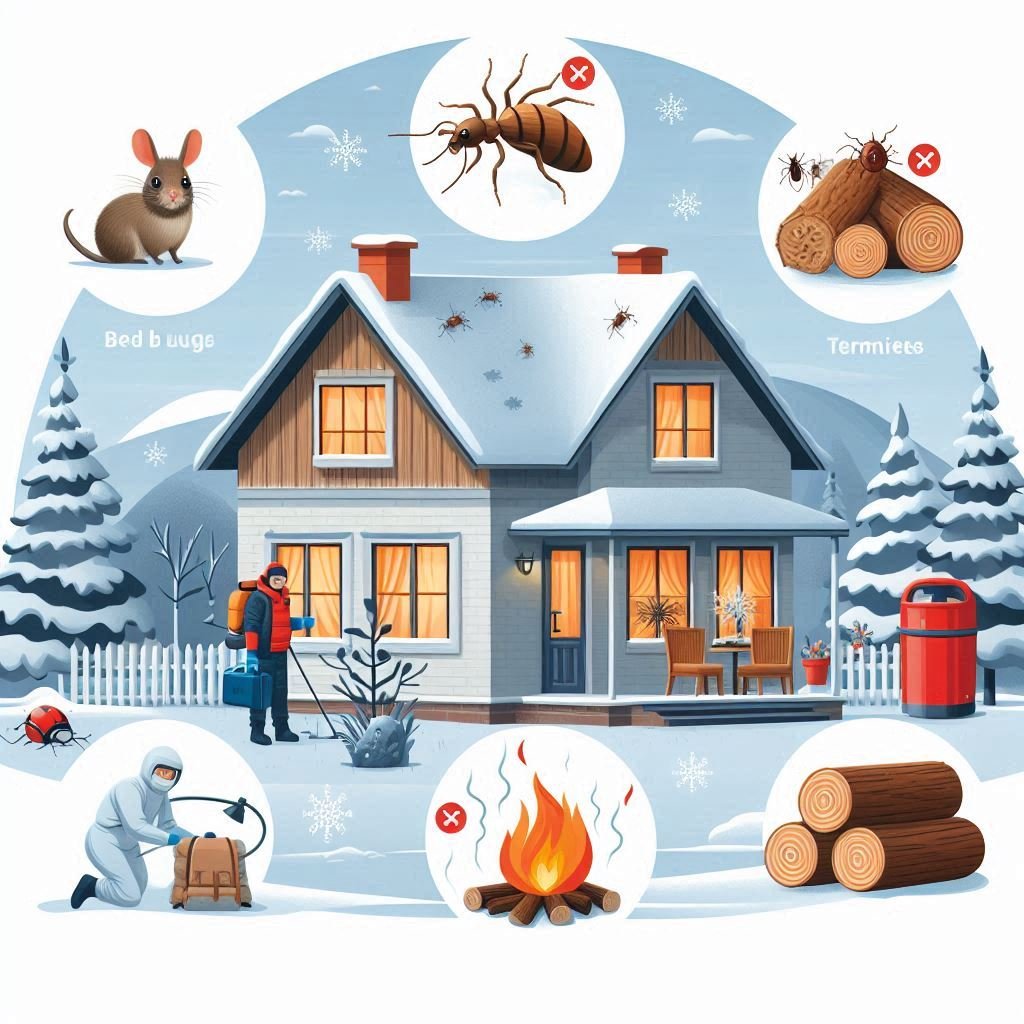
Summer is undoubtedly the most active pest season, but that doesn’t mean you can take these insects lightly in winter. Yes, pest control services like termite treatment and bed bugs treatment are equally in demand in winter, as they are in the summer.
Besides the common pests like cockroaches, termites, rodents, and mosquitoes, some peculiar winter pests tend to come out in cold weather. So, is there any way out to prevent these pests in winter?
Let us explore the different methods to deal with common winter pests in this article.
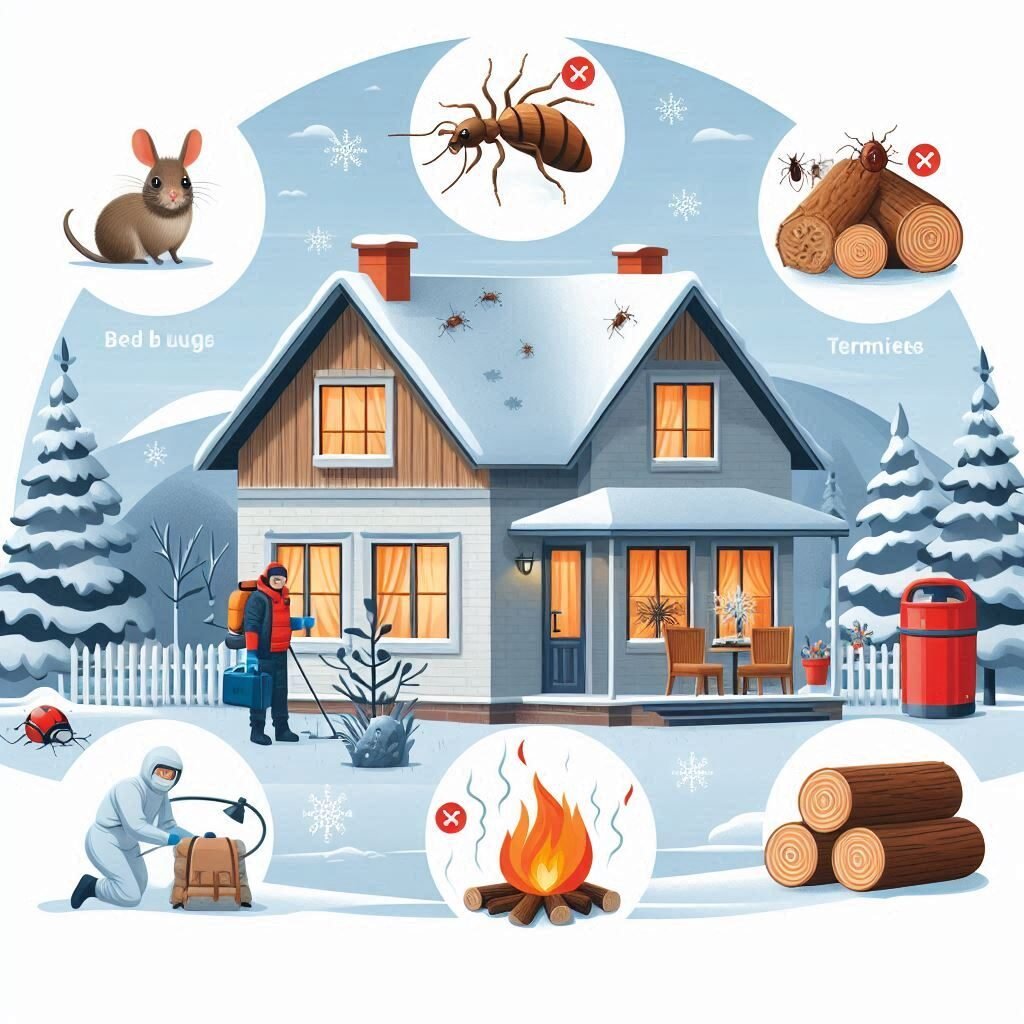
Common Winter Pests Found in Homes
Before we jump on to discuss the best ways to get rid of pests in winter, we want you to know what are these common winter pests that infest our homes.
Some of the pests found in winters intruding homes are:
- Bed Bugs
- Cluster Flies
- Flying Ants
- Moths
- Rats and Rodents
- Spiders
- Termites
Pest control in winter should be taken seriously. If ignored, these insects may soon take over your entire property, causing you serious damage. The best way to get rid of pests in winter is to plan for their eradication right after the first signs of their detection.
Top 10 Way to Prevent Common Pest in Winters
1. Keep Your Firewood Away
No one likes spending on a professional termite treatment in winter, so all the measures to avoid them should be practiced. The first one here is to store the firewood away from your home, as it may soon attract wood termites to your home.
2. Reduce Clutter at Home
You do not intend to spend on bed bugs pest control and want to enjoy a comfortable sleep on your bug-free beds? Then, make sure to declutter your home. These bed bugs tend to make their way to your beds by being transported through bags, shoes, dirty laundry, and delivery parcels. Minimizing the clutter in the home will help control these bugs to a large extent.
3. Proper Food Storage
You will hardly need to book a cockroach pest control if you pay attention to proper food storage in your home. Food is one of the main things that attract these pests. Perhaps, it is the reason that cockroaches are mostly seen hiding in the kitchen due to easy access to food. Avoid keeping food on kitchen countertops to prevent a cockroach infestation in winter.
4. Regular Home Cleaning
We agree winter is one season when we prefer cuddling all day long in our cozy quilts. But, when it comes to keeping your home pest-free, you must gear up for a regular home cleaning. Voila, you may hire professional home cleaning services and enjoy your cozy quilts too. The idea here is to prevent clutter in the home to prevent space for pest infestation.
5. Maintain Your Landscape
Winter should be no excuse for you to neglect your garden area or landscape. Overgrown bushes and untidy landscapes with wood piles act as open invitations to pests like termites and rodents. Make sure to trim your garden in winter to prevent all kinds of pests from hiding there. If you are unable to spare time by yourself, appoint an arborist to do the same but make sure you do maintain a trimmed garden even in winter.
6. Keep Moisture Leakage Under Check
It is a known fact that pests like roaches, mosquitoes, and rats are very fond of moisture. So, if you leave a leaking pipe or a clogged drain in your home, be ready to welcome pests in your home in the winter season. We, therefore, recommend you get all the water-leaking pipes and clogged drains repaired before the onset of winter.
7. Frequent Vacuuming Your Home
A quick tip for those who are worried about winter pest infestation at home is to use their vacuum cleaner. Yes, frequent vacuuming especially around the doors and windows, that make up for easy entry points for various pests will work! You can easily catch pests like silverfish, spiders, and beetles by vacuuming.
8. Check Your Chimneys and Ventilations
If you have chimneys in the kitchen and a fireplace in your living room, then you must be extra cautious. These chimneys are often the most neglected part of your home allowing pests to creep inside in search of warmth in your home. Make sure to clean the chimneys and inspect the chimney vents for any signs of pest infestation. Also, keep your home well-ventilated to avoid pest infestation.
9. Inspect Your Garbage Bins and Dumping Area
The sight that attracts many pests like rodents and roaches is your garbage bin. So, make sure to inspect your garbage bins every other day for any signs of rodents or other pests. Ensure you dump your garbage at a well-maintained and close dumping area outside your home in winter and all other seasons.
10. Book Professional Pest Control Services
The best and safest bet to overcome the problem of winter pests is hiring professionals for the same. Book pest control services to keep all kinds of pests at bay in winter. These trained professionals will offer a doorstep service leaving your home pest-free so that you can enjoy your winter sitting in your cozy blankets.
Effective DIY ant prevention solutions for Indian homes using natural repellents

Ants are one of the most common household pests and they can be very challenging to remove. Whether it’s a few scouts or an entire colony, the sight of ants in your kitchen, bathroom, or living room can be frustrating. However, with certain strategic and practical steps, we can stop ants from invading your space.
Sealing Entry Points is the First Step
Ants are incredibly tiny and can slip through the smallest cracks and gaps. To prevent their entry, one can inspect the exterior of their homes for crevices and small openings in the windows, doors and foundation. The gaps can be filled with silicone-based caulk or sealant . For further protection, you can install screens for windows to prevent their entry. By blocking their entry points, you create a physical barrier that ants can’t easily bypass.
Cleanliness Keeps The Pests Away
Ants, like any other pests, are drawing to food sources. This is why cleanliness is the key to keeping them away. Wiping down countertops, tables and other kitchen surfaces makes sure that ants aren’t attracted to food crumbs, grease and sugary residues.
Food should be stored properly to prevent their contamination with ants. Vacuuming daily and taking out the trash will prove useful in avoiding buildup of ant colonies around the house.
Natural Repellents are a Life-Saver
Several natural ingredients can be used to prevent ants from entering your home. These include:
- Vinegar solution: Ants are deterred by the smell of vinegar. Homeowners can create a solution of equal parts water and white vinegar and spray it around entry points like doorways, windowsills and baseboards.
- Essential Oils: Oils like peppermint, tea tree and lemon and be mixed with water and sprayed around the areas ants frequent to keep them away.
- Cinnamon and Cloves: Another home remedy for ants is to sprinkle ground cinnamon or place whole cloves around potential entry points. These spices are natural ant deterrents and will keep these pests away for good.
- Lemon Juice: Just like vinegar, the acidity of lemon juice interferes with ants’ scent trails, thus leading them away from your home.
Ant Baits for a Thorough Cleanse
Ant baits help lure the ants and they take the poison back to their colony, thus eradicating the source. Both homemade and commercial baits can be used such as borax mixed with sugar or honey at sites that ants frequent.
Precaution must be taken while using these as they can tend to be slightly poisonous for children and pets.
Preventing ants from entering your home requires a combination of cleanliness, sealing entry points, and using natural deterrents. By following the DIY solutions mentioned in this blog, you can create an ant-free environment. Remember that persistence is key—taking proactive steps can save you the hassle of dealing with an infestation down the line. If the problem persists despite your efforts, consider consulting a pest control professional for more targeted solutions.

